*This post may contain affiliate links. Thank you for your support.
Get ready to fall head over heels for this incredibly delicious Japanese Miso Eggplant recipe, known as Nasu Dengaku! This dish, featuring baked and caramelized eggplant with a miso glaze, is far more than just a side dish – it’s a journey of flavor that promises to transform the humble eggplant into a mouthwatering masterpiece.
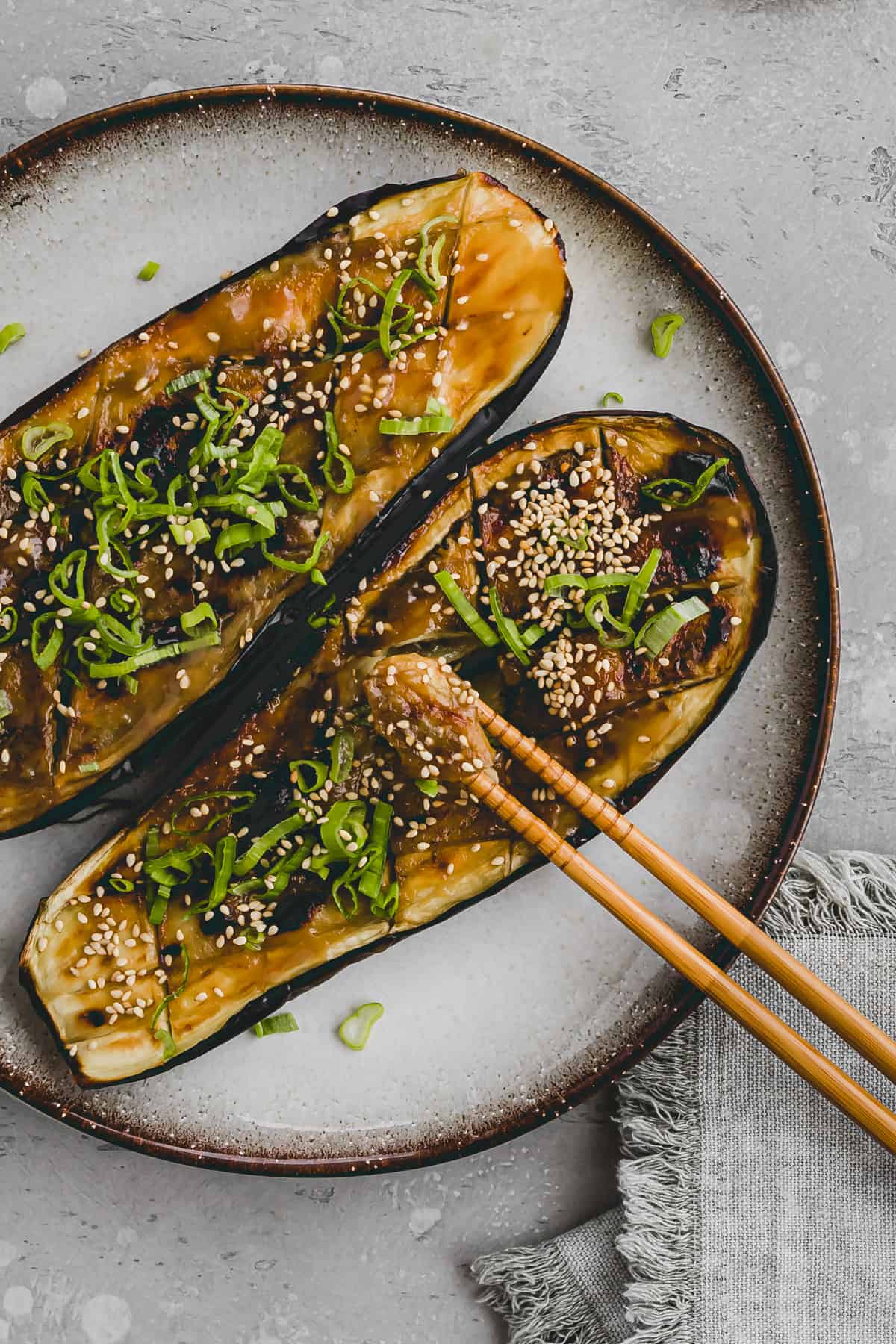
Imagine biting into eggplant like you’ve never tasted before. With this Miso Eggplant recipe, you’re about to convert even the most skeptical of eggplant critics!
Prepared following a traditional Japanese technique, these eggplants boast an incredible umami flavor, melting like butter the moment they hit your tongue.
The secret? Each eggplant is deeply slashed crosswise, baked until tender, and then broiled with a tasty miso glaze. A sprinkle of toasted sesame seeds and green onions before serving adds the perfect finishing touch.
Thanks to a special cutting technique, the finished Miso-Glazed Eggplant can be easily scooped out in bite-sized pieces with chopsticks, ideally served alongside jasmine rice. And a little insider tip: the eggplant skin isn’t eaten in this recipe. 😉
“Nasu Dengaku,” as it’s called in Japanese, is a variation of “Miso Dengaku” – grilled ingredients with a miso glaze. This tradition includes variants with tofu, daikon, konnyaku, and of course, eggplant (Nasu).
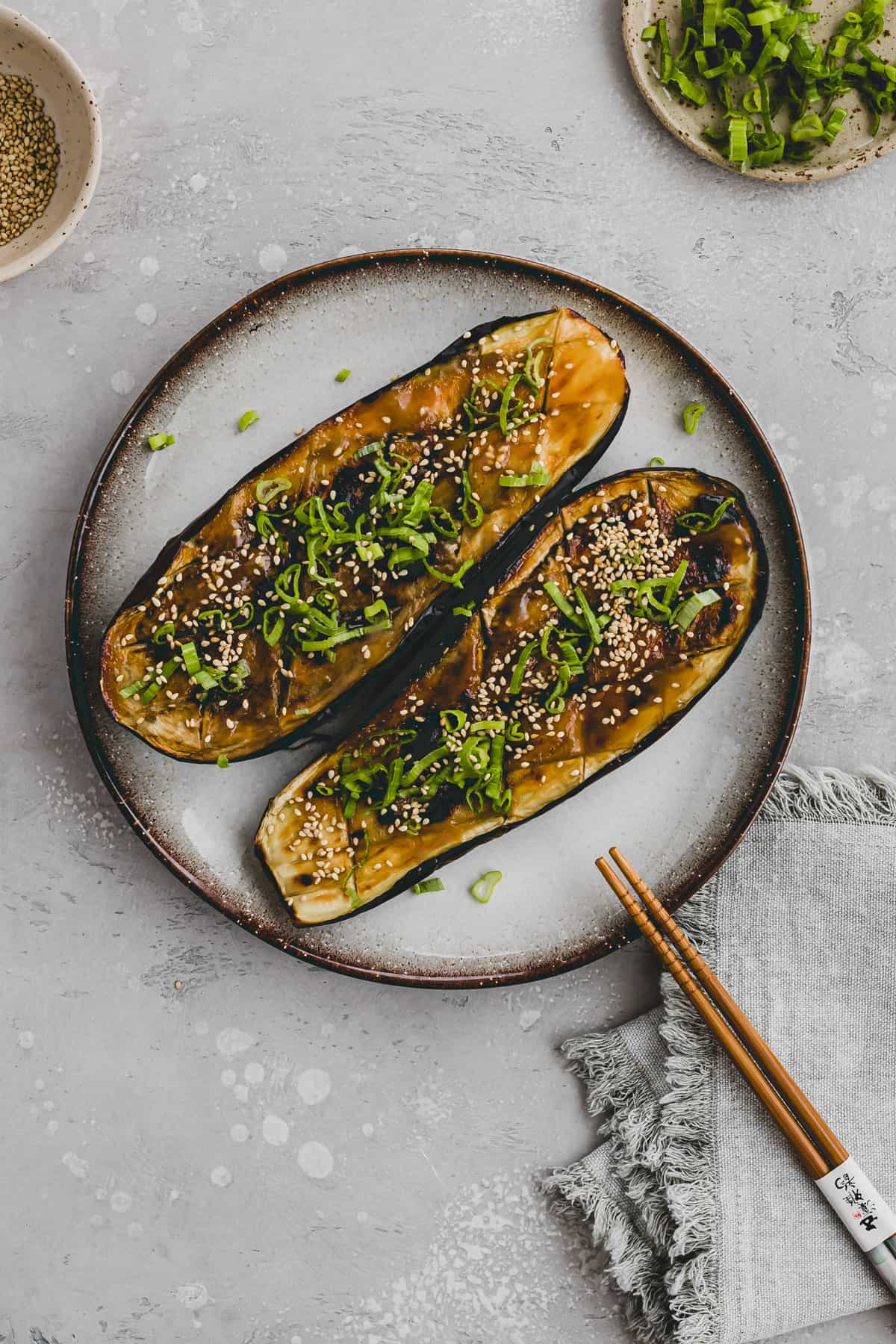
Why You’ll Love This Recipe
What is Miso Paste?
Miso paste, originating from Japan, is made by fermenting soybeans and salt, with Kōji mold spores aiding the fermentation process. Depending on the type, miso paste can also contain rice or other grains.
Shiro Miso, or white miso paste, is the mildest form, slightly sweet, and often used in miso soup. Aka Miso, or red miso paste, is fermented longer, resulting in a more intense flavor, suitable for miso ramen, tofu, or vegetable dishes.
When shopping for miso paste, quickly check the ingredients list. A quality miso paste should contain nothing more than soybeans, possibly rice, salt, yeast, and Koji culture. Some miso pastes include unnecessary additives like colorings and flavor enhancers. I’ve linked a couple of high-quality organic miso pastes above.
Miso paste is known for its health benefits, especially for promoting a healthy gut flora. To preserve its probiotic benefits, avoid overheating the miso paste, as this can destroy the beneficial bacteria.
More Delicious Recipes with Miso Paste
- Miso Ramen
- Edamame Salad
- Asian Slaw
- Spaghetti Puttanesca
Ingredients
See recipe card for quantities.
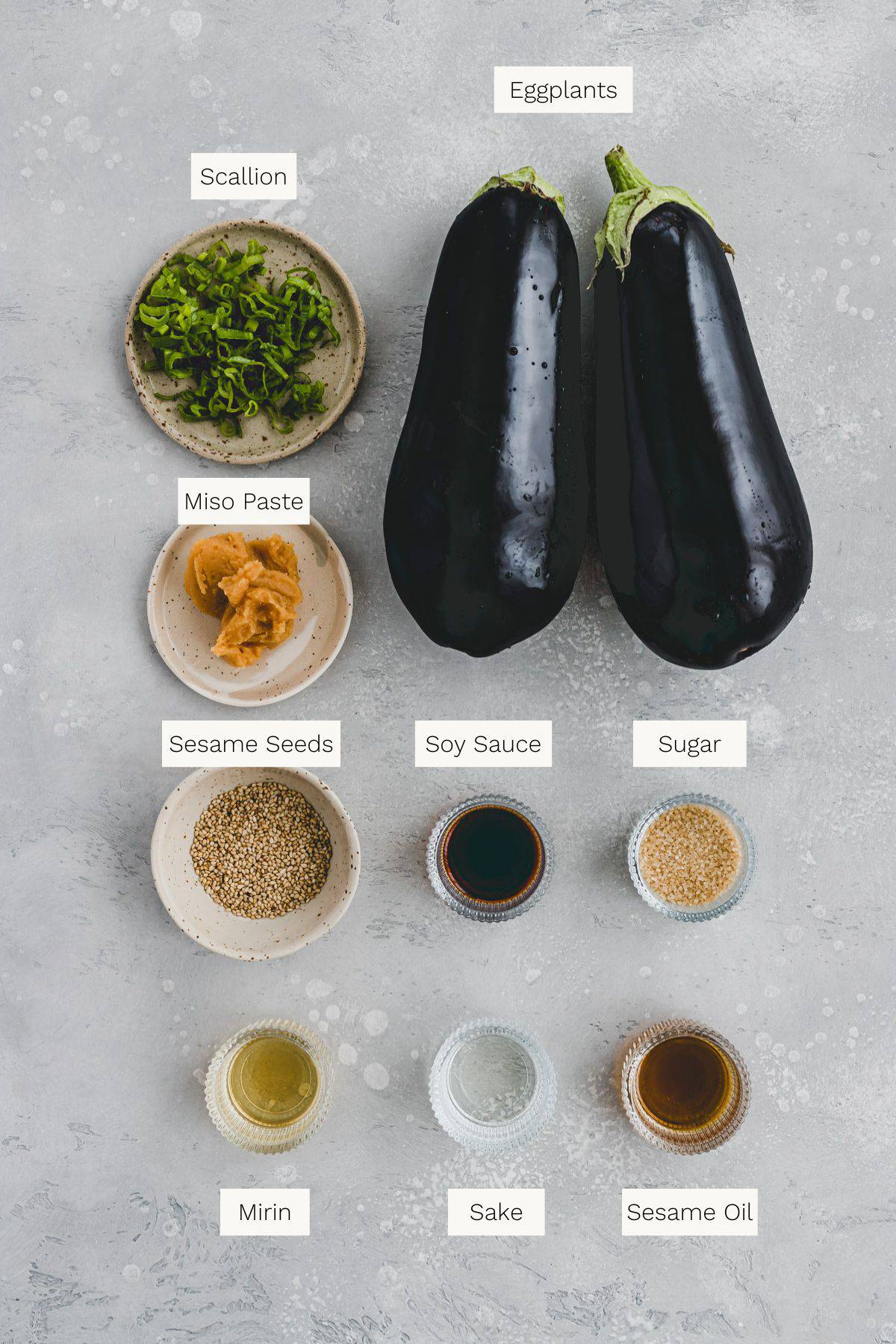
Visual Step-by-Step Instructions
This visual step-by-step instruction will help you along the way – definitely recommended if you’re a cooking beginner!
- Halve the eggplants lengthwise and make deep crosswise slashes in the flesh using a sharp knife. → Be careful not to cut through the skin!
- Soak the eggplants in a bowl of cold water for 10 minutes to reduce bitterness and prevent discoloration.
- Meanwhile, mix all the ingredients for the miso glaze in a small bowl.
- Pat the eggplants dry with paper towels, brush the cut surfaces with sesame oil, and place them cut-side down on a baking sheet lined with parchment paper.
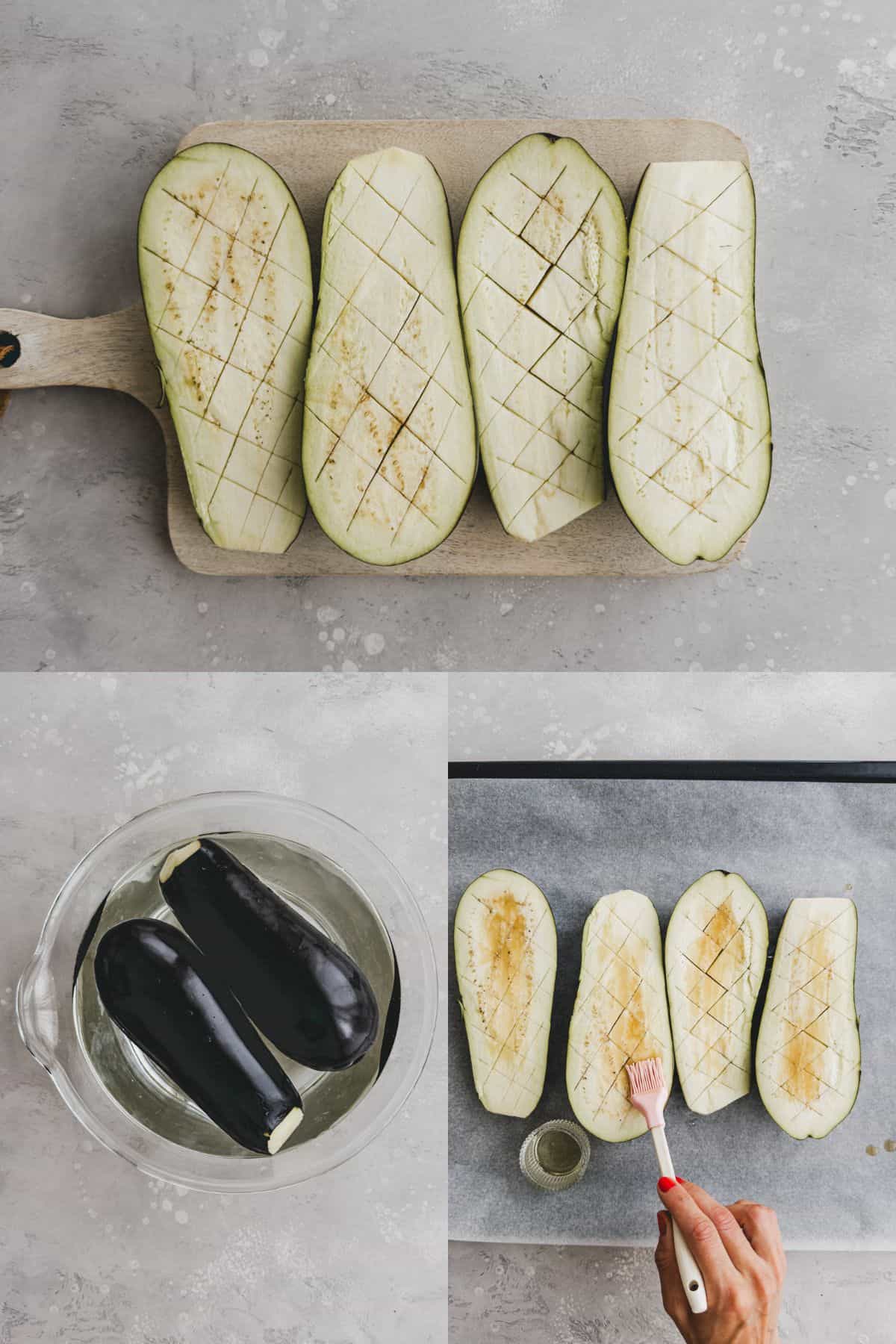
- Bake in the upper half of the preheated oven at 425°F (220°C) for 30 minutes.
- Remove the tray, turn the eggplants over, and generously brush them with the miso glaze.
- Switch the oven to broil at 425°F (220°C). Broil the eggplants on the top rack for about 10 minutes until the miso glaze bubbles and caramelizes slightly.
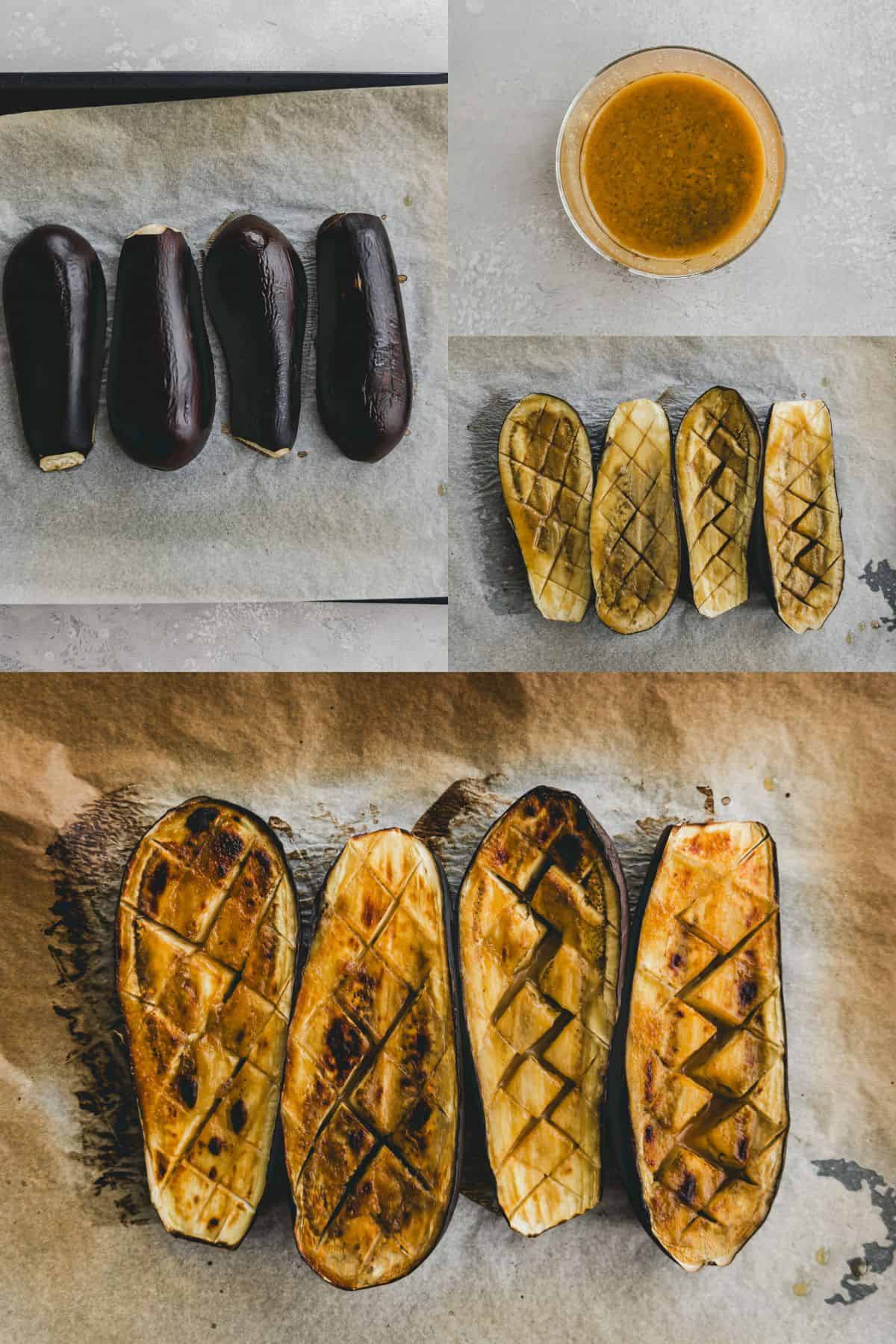
- Serve the Miso Eggplants warm, garnished with toasted sesame seeds and green onions, accompanied by jasmine rice!
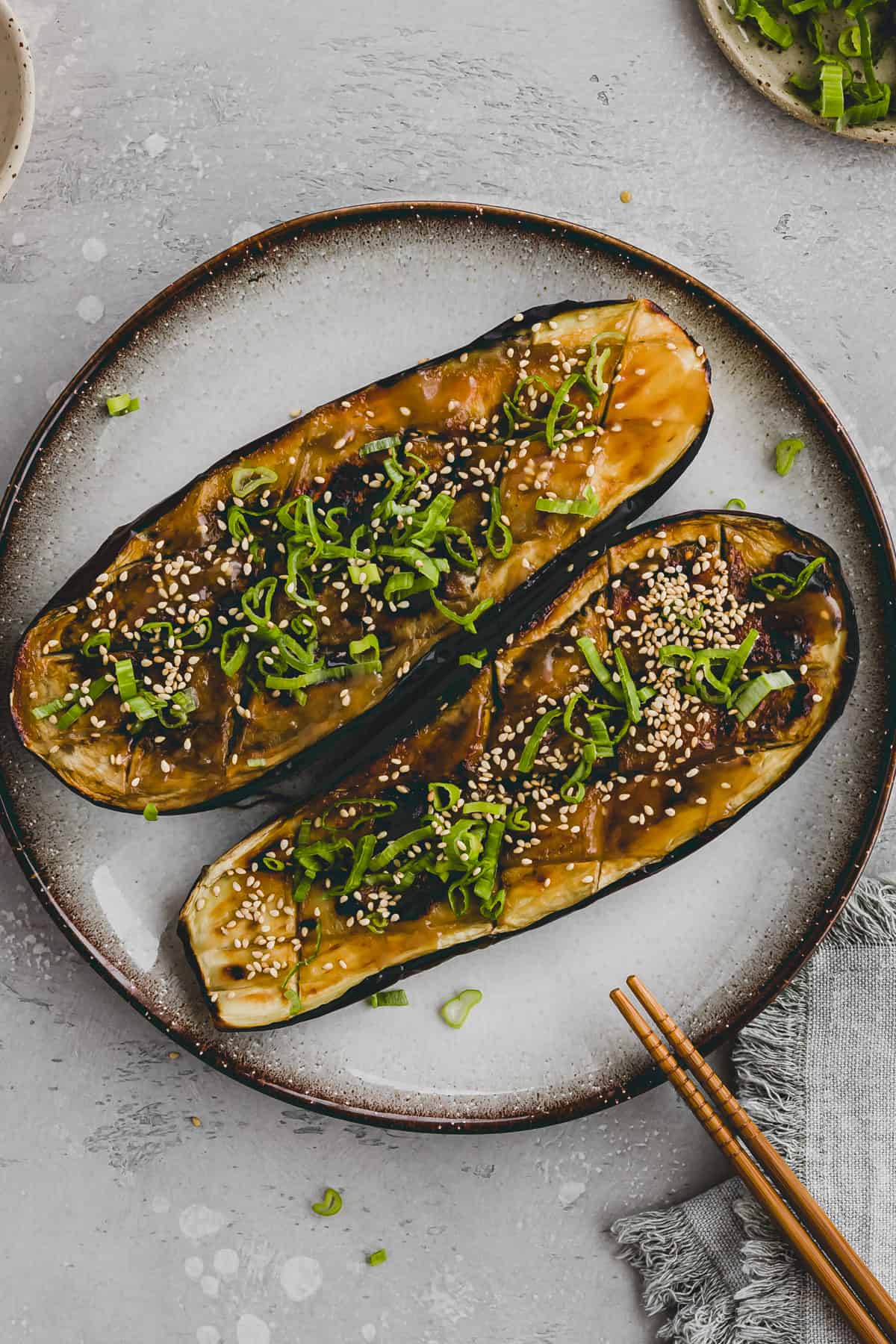
Grilling Variation
In the summer, we also love preparing this Miso Eggplant on the grill, adding a magical touch to any BBQ night.
- Follow the miso-glazed eggplant recipe as above, but after brushing with sesame oil, grill the eggplants cut-side down on the grill grate for about 15 minutes until tender.
- Then, generously brush the tender eggplants with the miso glaze and grill them cut-side up, for about 10 minutes
- Garnish with toasted sesame seeds and green onions.
Storage Instructions
Japanese eggplant tastes best when fresh. However, if you have leftovers, store them in an airtight container in the fridge for up to 2 days.
Enjoy cold or reheat briefly in the oven/microwave.
If you make this recipe, I’d love for you to give it a star rating ★ below.
Please follow me on Instagram, Pinterest, and Facebook or sign up for my free newsletter to never miss the newest recipes. I would be thrilled to welcome you to my community & thank you so much for your support!
📖 Recipe
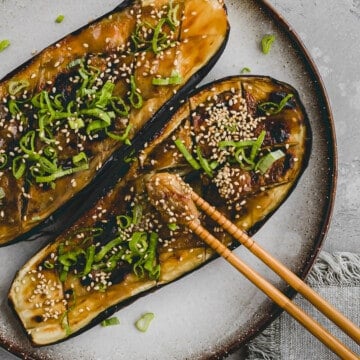
Miso Eggplant (Nasu Dengaku)
Click on the stars to leave a vote!
Ingredients
- 2 eggplants see notes
- 1 tbsp toasted sesame oil
- 1 scallion only green part, finely sliced
- some toasted sesame seeds
Miso Glasur
- 2 tbsp miso paste
- 1 tbsp sugar
- 1 tbsp sake see notes
- 1 tbsp mirin see notes
- 1 tsp soy sauce
Instructions
- Preheat your oven to 425°F (220°C) with both top and bottom heat.
- Halve the eggplants lengthwise and make deep crosswise slashes in the flesh using a sharp knife. → Be careful not to cut through the skin!
- Soak the eggplants in a bowl of cold water for 10 minutes to reduce bitterness and prevent discoloration.
- Meanwhile, mix all the ingredients for the miso glaze in a small bowl.
- Pat the eggplants dry with paper towels, brush the cut surfaces with sesame oil, and place them cut-side down on a baking sheet lined with parchment paper.
- Bake in the upper half of the preheated oven for 30 minutes.
- Remove the tray, turn the eggplants over, and generously brush them with the miso glaze.
- Switch the oven to broil at 425°F (220°C). Broil the eggplants on the top rack for about 10 minutes until the miso glaze bubbles and caramelizes slightly.
- Serve the Miso Eggplants warm, garnished with toasted sesame seeds and green onions, accompanied by jasmine rice!


